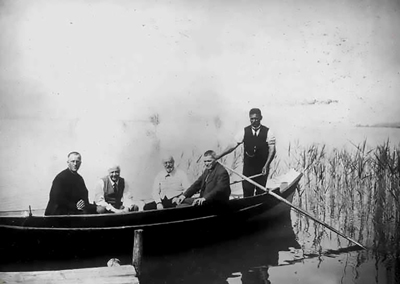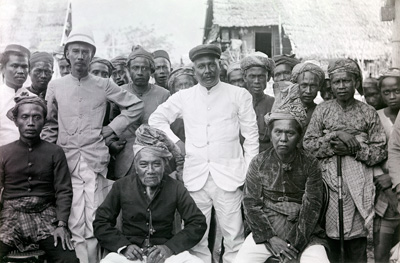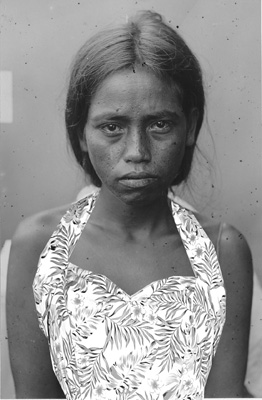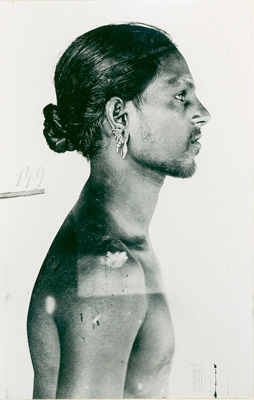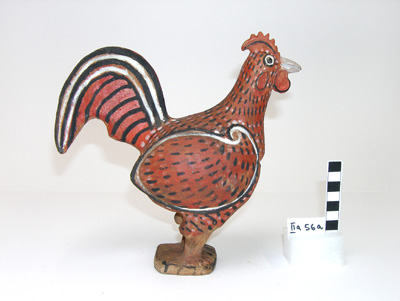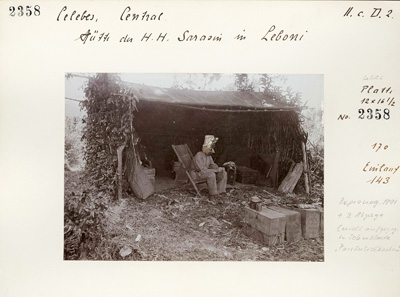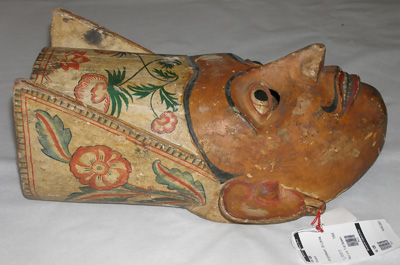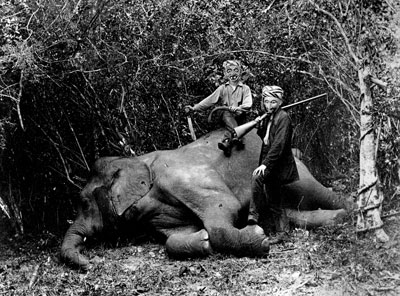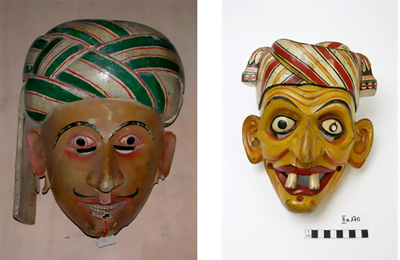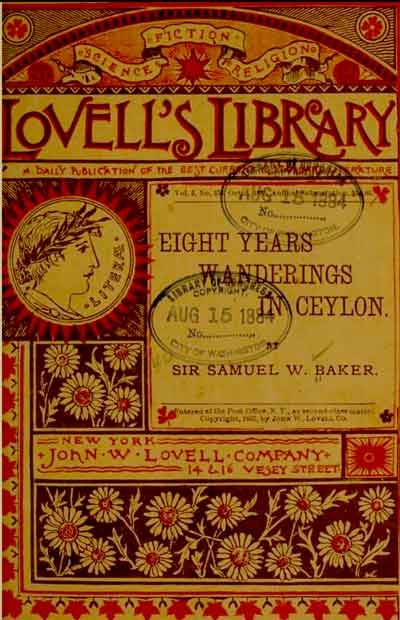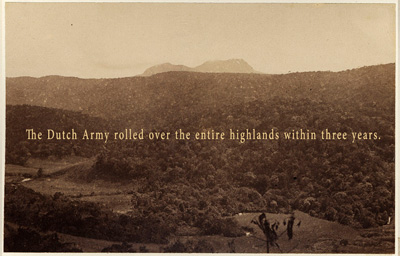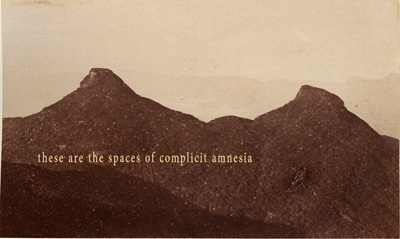Letters To Fritz and Paul
The project Letters to Fritz and Paul focuses on the expeditions of the Swiss cousins, lovers and scientists, Fritz and Paul Sarasin, two ancestors of the founders of the Swiss Sarasin Bank. It explores how people (including their objects) have been respectively classified, renamed and dislocated as a result of economically and scientifically motivated expeditions of European empires. The Sarasins, who ventured across the Dutch and the British East Indies between 1893 and 1907 as well as various parts of Africa and the Middle East, brought back to Switzerland meticulous studies of native peoples, including photographs and objects which are stored today in the Museum der Kulturen (Ethnographic Museum) and the Naturhistorisches Museum (Natural History Museum) of Basel, Switzerland.
Through various gestures of adding and erasing, the project includes video, replicated objects and altered archival photographs to explore the colonial history of Switzerland. It questions the relationship between ethnographic objects, their collectors and the setting in which they have been placed.
Video excerpt from the project Letters to Fritz and Paul
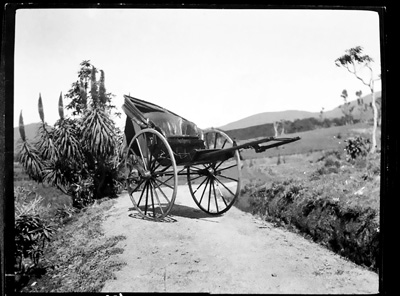
Mein Kuli in Nuwara Eliya (Sri Lanka 1901-1920), altered photograph from the Basel Mission archives, 2016. The original caption of this image reads: Mein Kuli in Nuwara Eliya._Date 01.01.1901-31.12.1920
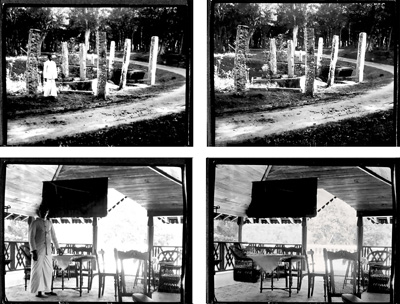
Alterations of photographs taken by the Basel Mission in Sri Lanka (Ceylon) sometime between 1901 and 1920.
The Basel Mission was a Christian missionary society that was founded in 1815 in Basel, Switzerland. It was active in various parts of the world including the two former colonies of Celebes and Ceylon. Some of these missions took place shortly before and after the expeditions of Fritz and Paul Sarasin who benefited from the established networks of the missionaries. At the time this photograph was taken, Ceylon was still a British colony. The photographer of the original images is unknown.
The image above was taken in 1906 in an unknown location. Seen in the image are the four Swiss men (from left to right): Father Damian Buck, nature teacher at the Einsiedeln Monastery, Fritz Sarasin, naturalist and ethnologist from Basel, Professor Leopold Rütimeyer, doctor and ethnographer from Basel, and Paul Sarasin, naturalists and ethnologists from Basel. There is also an anonymous individual to the right who appears to be their local assistant. The photograph is found in the State archives of Basel, Switzerland.
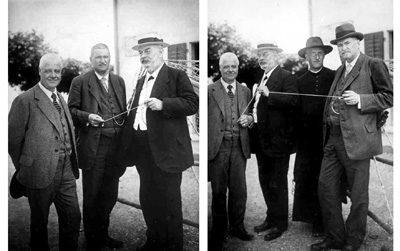
Altered photograph from the State archives of Basel, Switzerland, 2016.
left: Dr. Fritz Sarasin, Dr. Paul Sarasin, Prof. Rütimeyer, 1908
right: Dr. Fritz Sarasin, Prof. Rütimeyer, Father Damian Buck and Dr. Paul Sarasin, 1908.
The original photographs are found in the State archives of Basel, Switzerland.
The image above was taken by Fritz and Paul Sarasin during their expeditions to Indonesia (Celebes) in 1902. The man in the white uniform to the right was the Indian Dutch official Willem H. Brugman who accompanied the Sarasins from 1895 onwards as a representative of Dutch colonial power on the island. The man to his left (in a similar uniform) was another Indian Dutch official called Niels. In the front row and seated are the three Rajas (princes) who ruled various areas of Central Celebes and whom the Sarasins and the Dutch attempted to establish diplomatic relations with. The rest of the men in the photograph were probably the local assistants of Fritz and Paul Sarasin.
It was difficult for the Dutch colonial officers in Indonesia (Celebes) to convince the local rulers to «accept Dutch authority» (1). The Dutch also lacked maps and knowledge of the interiors of the island, including its political and social structure. A short time after this photograph was taken, the rajas of Palu bay (local rulers) prevented the Sarasins from continuing their expedition. Desperate for help, the Sarasins asked the Dutch government for support. The result of this was an invasion by the Dutch colonial army. In one of their later travelogues, the Sarasins profoundly thank the Dutch government for a «support so active in nature as it probably almost unprecedented in the history of science» (2).
source of quotes:
1 Tropenliebe: Schweizer Naturforscher und Niederländischer Imperialismus in Südostasien um 1900 , Bernhard C. Schär. 2015
2 The Swiss of All People! Politics of Embarrassment and Dutch Imperialism around 1900, Bernhard C. Schär. 2017
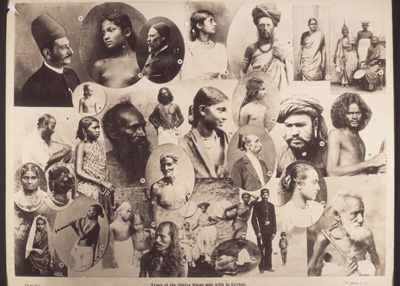
Image taken from the Basel Mission archives
“Types of the Native Races met with in Ceylon. 1. Parsee. 2. Jaffna Tamil. 3. Sinhalese. 4. Egyptian. 5. Sinhalese Woman. 6. Hindu Fakir. 7. Tamil Ayah. 8. Kandyan Priest and Headman. 9. Sinhalese Stylus Writer. 10. Tamil Cooly. 11. & 12. Kandyan Villager. 13. Sinhalese Woman. 14. Sinhalese Youth. 15. Afghan. 16. Veddah. 17. Jaffna Tamil Ladies. 18. Sinhalese (Low-country.). 19. Sinhalese Postman. 20. Sinhalese Plumbago worker. 21. Jaffna Tamil Bride. 22. Tamil Musician. 23. Jaffna Tamil Children. 24. Tamil Trader, High Caste. 25. Kandyan Chief. 26. Jaffna Woman. 27. Sinhalese Lace Maker. 28. Colombo Policeman. 29 Sinhalese Centenarian.”
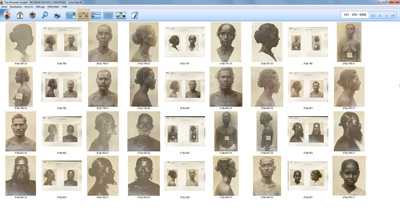
Screenshot taken from the archives of the Museum der Kulturen (Ethnographic Museum) in Basel, Switzerland, 2016.
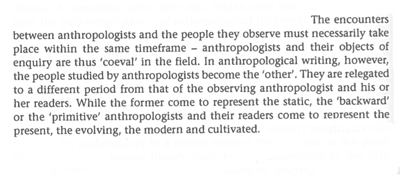
Source of Quote: On the Tropical Origins of the Alps. Science and the Colonial Imagination of Switzerland, 1700–1900. Bernhard C Schär, 2015
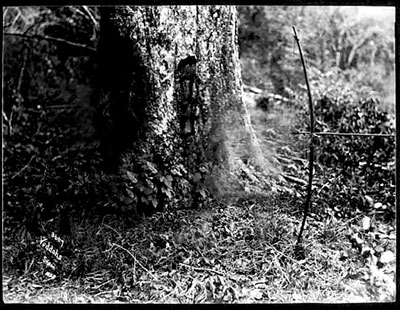
Altered image. The original photograph shows two Vedda men, one holding an axe and the other holding a bow and arrow. Photographer of original image is unknown.
«Thus we followed the Veddas from camp to camp in the remote wild, fascinated by the astonishing frugality of these forest people, whose only possessions include bow and arrow, axe, digging stick, firewood, a few bags and pouches made of animal skin or fur, and a tortoise shell that serves as a bowl» (Sarasin,1929:7).
Source of quote: Exhibition catalogue of The World in a Suitcase: The Five Sri Lanka (Ceylon) Expeditions, 1883 – 1925. Paul and Fritz Sarasin, 2016.
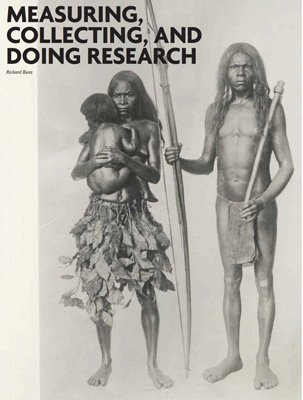
Exhibition catalogue of The World in a Suitcase: The Five Sri Lanka (Ceylon) Expeditions, 1883 – 1925 | Paul and Fritz Sarasin, an exhibition held at the Museum der Kulturen (The Ethnographic Museum) in Basel, Switzerland in 2016.
The image shows a Vedda couple and their baby, an indigenous people of Sri Lanka, whom Fritz and Paul Sarasin meticulously studied during their expeditions between 1883 and 1925. In 1908, the Sarasins provided photographs and measurements of the Vedda people to the German sculptor, F. Meineke and asked him to reconstruct a life-size Vedda family from plaster. This reconstructed family is stored today in the Museum der Kulturen (The Ethnographic Museum) in Basel, Switzerland.
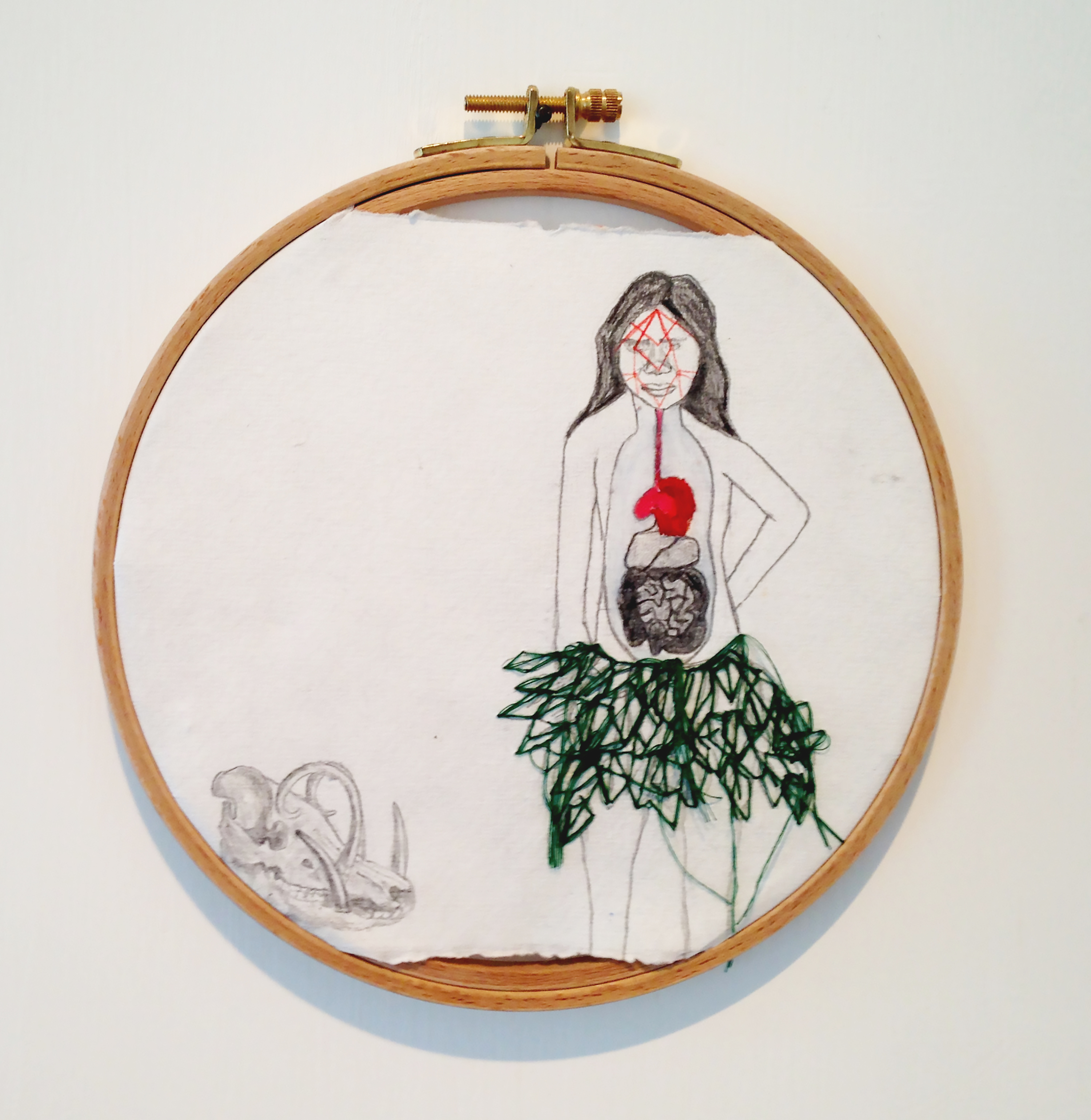
Vedda Woman and Barbirosa Pig, embroidery hoop, graphite and thread on paper
The image above is an alteration of a photograph found in the archives of the Museum der Kulturen (Ethnographic Museum) in Basel, Switzerland. The photograph is of a Toraja girl belonging to the indigenous people of South Sulawesi Island in Indonesia (Celebes). The original caption of this photograph indicates that she was a Toraja Slave. The original photograph was taken by Fritz and Paul Sarasin during one of their expeditions to the island on 7 October 1902.
The image above was taken by Fritz and Paul Sarasin during their expeditions to Sri Lanka (Ceylon) between 1883 and 1886. The man photographed belongs to the indigenous people of Sri Lanka whom the Sarasins meticulously studied. This photograph is also found today in the archives of the Museum der Kulturen (Ethnographic Museum) in Basel, Switzerland.
The image of the terracotta clay rooster was taken by the Museum der Kulturen (Ethnographic Museum) in Basel, Switzerland. The rooster was originally collected by the Sarasins during their expeditions to Sri Lanka (Ceylon) between 1883 and 1886. The clay rooster is found today in the collection of the Museum der Kulturen (Ethnographic Museum) in Basel, Switzerland.
The altered photograph above shows Paul Sarasin sitting in his tent during an expedition to Indonesia (Celebes) in 1902. The original caption of this image reads: Hütte du H.H Sarasin in Leboni in Celebes, Central 1902. This photograph is also found today in the archives of the Museum der Kulturen (Ethnographic Museum) in Basel, Switzerland.
The mask above was collected by the Sarasin cousins during their expedition to Sri Lanka (Ceylon) in 1891. The mask is stored today in the Museum der Kulturen in Basel (Ethnographic Museum), Switzerland.
The altered photograph above shows Fritz and Paul Sarasin with a killed pregnant elephant in Sri Lanka (Ceylon). The original caption of this image reads: Drs Fritz und Paul Sarasin mit einem toten Elefanten, 1883 – 1886. This photograph is also found today in the archives of the Museum der Kulturen (Ethnographic Museum) in Basel, Switzerland.
The two masks above were collected by the Sarasins during their expedition to Sri Lanka (Ceylon) in 1891. The masks are stored today in the Museum der Kulturen in Basel (Ethnographic Museum), Switzerland along with many other objects collected by the Sarasins.
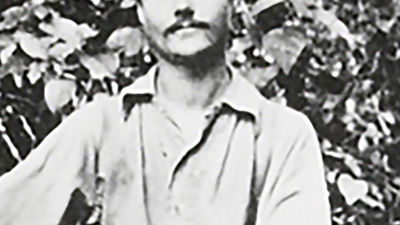
Cropped image of the photograph above which shows Fritz Sarasin posing on top of the dead pregnant elephant that he and Paul Sarasin killed in Sri Lanka (Ceylon). The original photograph was taken during one of their expeditions between 1883​-1886.
«The first thing that a good sportsman considers with every animal is the point at which to aim as to bag him as speedily as possible. It is well known that all animals from the smallest to the largest sink into instant death when shot through the brain and that a wound through the lungs or heart is equally fatal though not so instantaneous. These are accordingly the points for aim, the brain for its small size being the most difficult to hit. Nevertheless in a jungle country, elephants must be shot through the brain...
It is a singular thing that Ceylon is the only part of the world where the male elephant has no tusks, they have miserable little grubbers projecting two or three inches from the upper jaw and inclining downward. Thus a man may kill some hundred elephants without having a pair of tusks in his possession.»
Source of quote: Eight years wanderings in Ceylon 1821 till 1893 by Sir Samuel White, British explorer, officer, naturalist, big game hunter, engineer and writer. The book was published in 1883 New York.
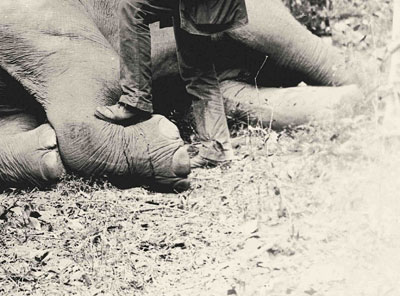
Cropped image of the photograph above which shows Fritz Saracen posing on top of the dead pregnant elephant that he and Paul Sarasin killed in Sri Lanka, Ceylon. The original photograph was taken during one of their expeditions between 1883 and 1886.
Altered photographs. Original photographs were taken by Fritz and Paul Sarasin during their expeditions to Sri Lanka (Ceylon) in 1908..
Letters to Fritz and Paul
Project by Inas Halabi, 2016-2017
Image credit: Altered images by Inas Halabi
Image credit: Every photograph as mentioned
RELATED WEB SITE
→ artist’s website
[ Border Farm Project ]
[ body in context I ]
[ body in context II ]
[ Citizen ]
[ Clothing Theory: Heinrich Lüber and Architecture ]
[ Family Photo Album ]
[ face to face ]
[ Gefunden — Found ]
[ Giving young Kosovo Albanians a face ]
[ IM PARK_I Lie to History … ]
[ Journey of a Yellow Man ]
• Letters To Fritz and Paul •
[ Neo_Celebration ]
[ Pain is Inevitable ]
[ Permanent Breakfast ]
[ Stammer - A Lecture in Theory ]
[ Treibsand ]
[ T’adaad i-sseneen—Counting Years ]
FEATURED THEME ON CITY SHARING
by ASUNCION MOLINOS GORDO
-
This project is an instrument for common critical analysis to help understand the reasons behind Egyptians’ diminishing …
by INAS HALABI
-
The project Letters to Fritz and Paul focuses on the expeditions of the Swiss cousins, lovers and scientists, Fritz and …
by SARAH BURGER
-
The planned modern city of Brasilia attracted me since a long time. Her defined shape, location and function proceded he …
by ADRIEN GUILLET
-
Youri Telliug talks with the artist Adrien Guillet about his project Citracit
Youri Telliug - What is Citracit …
by NIGIST GOYTOM
-
In 2013 more than 45 million people have been forced to leave their homes. This amounts to the biggest number of refugees …
by SULAFA HIJAZI
-
The on going debate on Arab identity and its (cultural) representation is strongly shaped by Edward Saidʼs formative …
by ASUNCION MOLINOS GORDO
-
WAM is a site-specific work that uses the historical trope of the cabinet of curiosities to explore the introduction of …
MORE CONTRIBUTIONS BY THE FOLLOWING
